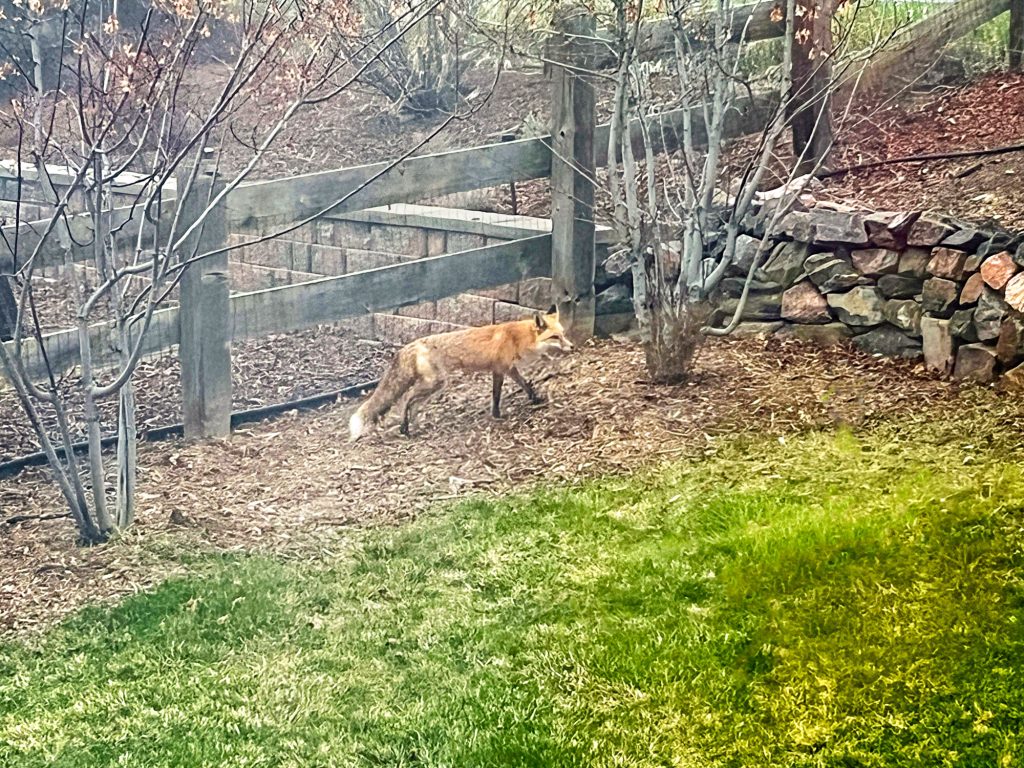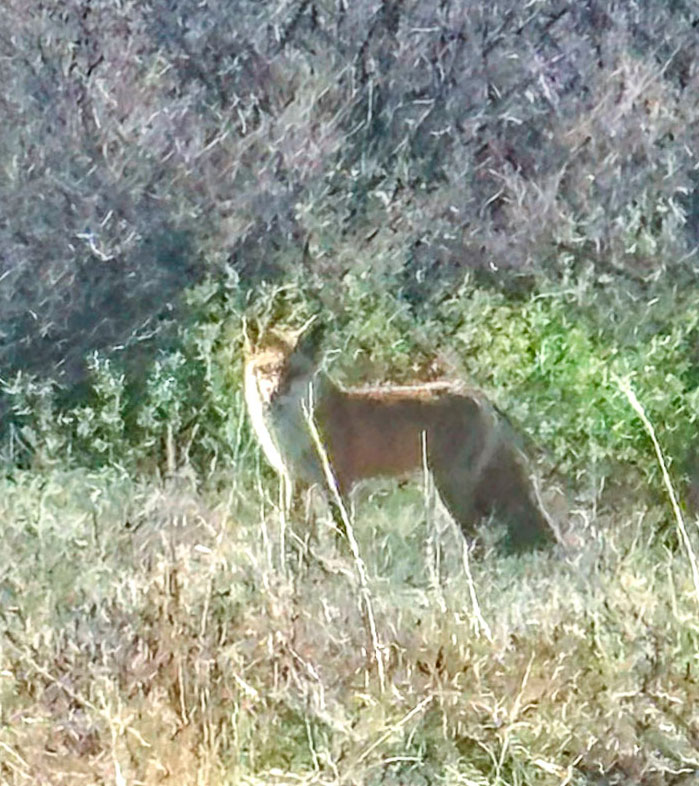Our red fox neighbors

This red fox (above) was spotted near dusk in late April, crossing a backyard in the Briar Cliff neighborhood. Red foxes are most active at dawn and dusk. Inset: Easter morning, another red fox roamed the open space near the Briar Cliff neighborhood.
We often see our wildlife neighbors in open spaces, walking along the streets, and even sometimes in our yards. Among those are the beautiful red foxes.
According to Colorado Parks and Wildlife (CPW), foxes can be found in most places in the state, including Douglas County. Colorado is home to four species of foxes. Red foxes are the ones spotted most often because they are successful urban dwellers and do well in the margins of urbanized areas.
Red foxes belong to the same family as wolves, coyotes and domestic dogs. Despite their name, they are not always red. “Red foxes in Colorado can be red, black, silver or a cross color,” stated Kara Van Hoose, public information officer for the CPW northeast region.
“Red is the most common. Black and silver are rarer to spot, caused by a recessive genetic trait. A black fox was seen in the Castle Rock area last year,” continued Van Hoose. But regardless of their coloring, all red foxes have a distinctive, white-tipped tail.
Possessing a keen sense of smell, excellent hearing and good vision, red foxes are also good swimmers and can run at speeds of 30 miles per hour. Their typical home range is five to 10 square miles, although they usually stay within a mile of their den while raising young. Red foxes have a single annual litter, averaging four to five pups, also called kits.
Red foxes are very vocal. They bark, yip and even howl, although their howls are quite different from coyote and wolf howls. “During breeding season, foxes can make a screaming noise that is sometimes mistaken for a woman calling for help. We receive calls or reports from concerned residents over the yelling,” Van Hoose shared.
Foxes are scavengers and skilled hunters. They will eat ground nesting birds and their eggs, insects, amphibians, fish, crayfish, earthworms and small mammals. They also eat fruits, berries and nuts, as well as carrion and garbage. “They are pretty nimble, can get into small spaces easily and are a clever species,” stated Van Hoose.
To avoid attracting foxes to homes, homeowners should: store garbage in wildlife-proof containers, clean up fallen fruit from fruit trees, use an enclosed composting system, avoid placing meat or fruit scraps in mulch and compost piles, keep pets indoors and avoid feeding pets outdoors. It is also important to never feed wildlife. In many parts of Colorado, the intentional feeding of red foxes is illegal.
Some deterrents might help scare off foxes, such as bright strobe lights and loud noises. However, foxes are very adaptable, so they might not be scared away for long. There are some repellents for deterring foxes, such as ammonia, which are most successful in small, isolated areas.
For more information about red foxes and coexisting with them, visit cpw.state.co.us/species/red-fox.

Article and photo by Susan Helton; photo courtesy of Hollen Wheeler